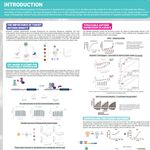Keynote Presentation: It is Time for TIME (Tumor Immune Microenvironment) in Experimental and Diagnostic Pathology
-
Alexander David Borowsky, MD
Professor, Pathology and Laboratory Medicine, Center for Immunology and Infectious Disease and UC Davis Comprehensive Cancer CenterBIOGRAPHY
Cancer initiation and virulence depends on mechanisms to evade host immunosurveillance and suppression of early invasion and growth. Distinct phenotypes of the immune infiltrates in and around cancers derive from differing mechanisms. Some very good prognosis cancers are immune "deserts" with very little immune cell infiltration. These tumors register as normal or self to the immune system, accompanied by a more normal (less aggressive) behavior. Meanwhile, the most aggressive appearing cancers elicit the most inflammation. These tumors employ a variety of mechanisms to evade immune suppression. The now well known immune checkpoint PDL1 aberrantly expressed by tumor cells (or induced in surrounding immune cells) has provided a critical target for therapy, effecting cures in a subset of previously incurable patients. Overall, however, this remains a small subset. Advanced generation mouse models provide an opportunity to explore new treatment protocols. For example, we have shown that immune "priming" augments PDL1 checkpoint inhibitor therapy. In another model, we find that tumors with an "immune excluded" phenotype, where a brisk infiltrate is seen surrounding but not infiltrating a tumor, can be attributed to the simultaneous expression of macrophage chemoattracting and repelling paracrine factors. HER2 amplification, seen in 15% of invasive breast cancers but twice as many intraductal cancers (DCIS) provides a prototype tumor antigen and another opportunity to explore rational combinations of immune and cell targeted therapies. There is growing list of additional immune synapse targets with drugs in development and clinical trials now. Meanwhile, predictive biomarkers for specific targets or combinations of targets are also in active development. As we and others have shown, advanced generation mouse models of human disease play a critical role in the development of mechanistic evidence for new therapies and new diagnostic and predictive biomarkers.
Learning Objectives:
1. Review patterns and mechanisms of the tumor immune microenvironment
2. Understand examples of experimental pathology in immune intact models of disease
3. Promote active interest in the evolving field of cancer immunotherpy as a personalized medicine approach
Sponsored By: Thermo Fisher Scientific
Please update your information
Certificate of Attendance
DOWNLOAD CERTIFICATE





